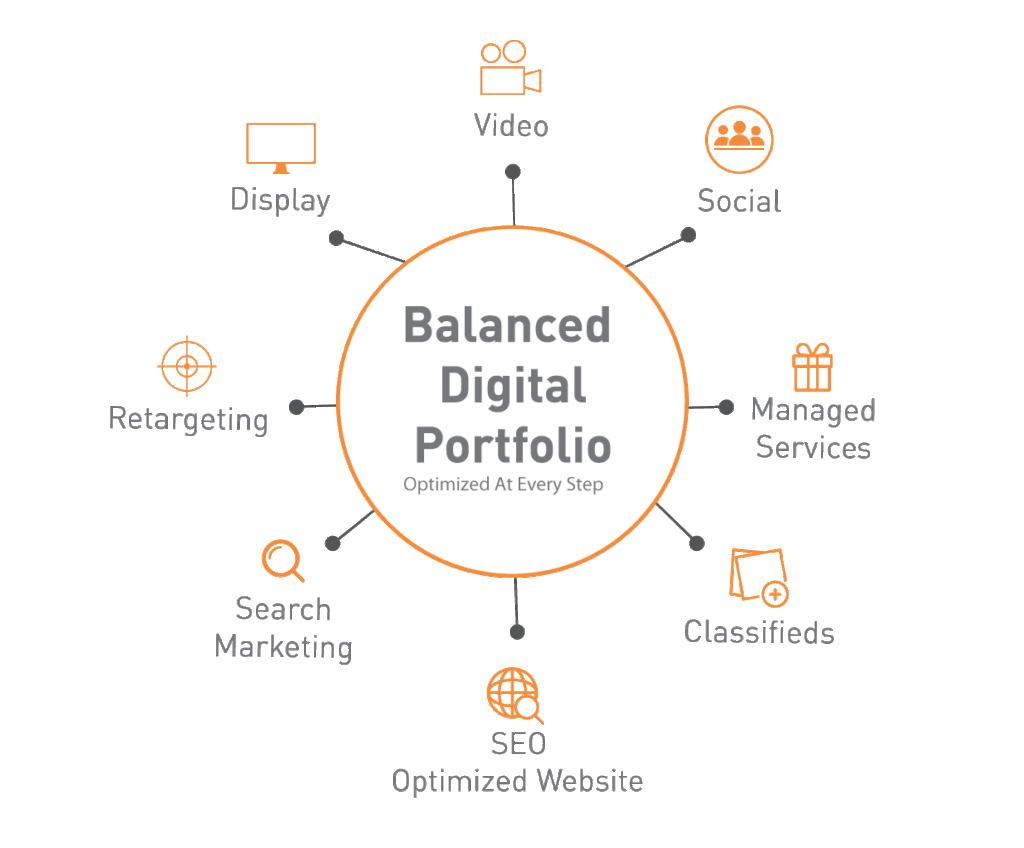The dealer’s guide to digital advertising
Four essential strategies for successful digital advertising
Tuesday July 24, 2018
Article Highlights
- As digital advertising’s importance has risen, so too has the number of specialized technologies promising instant SEO improvement, guaranteed paid search top billing, custom-made display ads and other isolated benefits. Unfortunately, most of these solutions won’t move the needle for your dealership. For digital advertising to work effectively, it needs to be deeply integrated with all the components of your digital marketing strategy.
- With the right approach to your digital strategy, it’s possible to target your most coveted audience: shoppers who have already shown an interest in your specific vehicles. Reaching these consumers can be essential and cost-effective.
- While a long-term advertising approach built on seasonal and monthly advertising campaigns has long been a cornerstone of automotive marketing, the rise of data and local digital targeting has created new opportunities to measure and maximize performance. To do so effectively requires a combination of real-time performance monitoring and long term strategic consultation powered by data-driven recommendations.
WELCOME TO THE “DIGITAL FIRST” ERA
Digital advertising has evolved from a component of dealership marketing to the cornerstone of effective strategy. Cox Automotive’s 2018 Car Buyer Journey study shows that nearly all car shoppers turn to the internet to research and consider their next automotive purchase. The same study also reveals that at the start of their shopping journey, 2 out of 3 shoppers do not know exactly which vehicle they want to purchase. For those shoppers who use the internet to find their next vehicle, the majority of their time spent researching is spent online making a decision about their intent to purchase.
New data from the Dealer.com network reinforces this trend. Consumer engagement with digital advertising continues to rise across our industry-wide network, and dealers who invest in a multichannel advertising portfolio with Dealer.com enjoy, on average, more visits, vehicle views, leads, and new car sales.1 To translate these trends into a successful multi-channel digital advertising strategy. you need to understand:
- The types of digital ads most responsible for traffic and leads.
- How digital ads can be used to both capture existing demand and generate new demand in your market.
- The elements of a strong digital advertising portfolio, and how to balance them.
- Common digital advertising pitfalls, and how to avoid them.
1. START WITH A “CONNECTED” FOUNDATION
As digital advertising’s importance has risen, so too has the number of specialized technologies promising instant SEO improvement, guaranteed paid search top billing, custom-made display ads and other isolated benefits.
Unfortunately, most of these solutions won’t move the needle for your dealership. For digital advertising to work effectively, it needs to be deeply integrated with all the components of your digital marketing strategy: your website, your inventory merchandising, your customers’ shopping tendencies, the advertising networks that serve your ads, and so on. If your tools don’t integrate in this way (and most of the individualized technologies you may come across don’t), you’ll fall into one of the three most common digital advertising pitfalls:
- DISCONNECTION Advertising managed by separate providers, leading to inconsistent messaging and decentralized analytics.
- INCOMPLETION Customized display ads and other creative, designed by an agency, that lack effective distribution and targeting (a beautiful custom display ad is easy on the eyes, for example, but it doesn’t achieve much if it doesn’t have the data targeting behind it to reach your intended audience).
- LIMITATION Small teams and diminished data-sets which limit targeting effectiveness. For instance, even the savviest internet managers can’t pull from vast shopper data that or rely on an entire team of industry experts to leverage the latest digital advertising technology.
Keys to Success
Ask the right questions, and integrate your strategy. As you invest in your digital strategy, ensure you have the right strategic and technical framework. You can begin by asking these few key questions:
- Do your campaigns connect “holistically” with shoppers across search engines, the websites they visit every day, your own website retargeting, and social channels?
- Do they reach across every major display network and advertising channel?
- Do they reflect your manufacturer’s campaigns and compliance guidelines?
- Do they integrate your incentives, pricing, inventory, and overall digital marketing strategy?
2. CAPTURE EXISTING DEMAND WITH PAID SEARCH AND RETARGETING
With the right approach to your digital strategy, it’s possible to target your most coveted audience: shoppers who have already shown an interest in your specific vehicles.
Thanks to search engines, shoppers can easily seek out their desired vehicles—right down to the color and trim level. These searches are invaluable: they reflect existing demand in your market, and signal a purchase intention for your specific vehicles.
Reaching these consumers is essential and cost-effective. Think of it as permission-based marketing: customers are actively seeking information, requesting info about your dealership—and, possibly, your competitors—to find a deal. They’re effectively giving you permission to target them. And the best way to do so is by serving relevant, top-spot paid search ads the next time these shoppers search for inventory like yours on Google, Bing, or Yahoo.
Similarly, if shoppers have already visited your website and left, you need to inspire them to return to your digital showroom through retargeting display ads. After all, they’ve already demonstrated an interest in your inventory. Accordingly, these ads should show the inventory most relevant to the browsing this shopper did on your website, down to the pricing and specials.
Keys to Success
Optimize your investment to capture every available lead. While a demand capture strategy may seem intuitive, most dealerships nationwide fail to do so effectively. Indeed, despite the fact that paid search and retargeting are the two most cost-effective forms of digital advertising across the Dealer.com network, the average dealer who utilizes paid search and retargeting sees 57% more leads than those who do not. An effective digital partner will be able to analyze your specific market and recommend a strategy that can capture every available lead.2
3. GENERATE NEW DEMAND WITH TARGETED DISPLAY AND SOCIAL
In a perfect world, demand for new and pre-owned cars would be constant. Phones would ring off the hook, inboxes would be stuffed to capacity with new leads, and showrooms would be bursting at the seams with eager shoppers ready to sign. The reality, however, is that demand ebbs and flows—like tides caused by seasonal and economic cycles.
Display, social, and video advertising help mitigate this by generating new interest in your inventory. By reflecting your specific pricing and incentives, targeting the shoppers where and when it matters most, and mirroring your specific marketing strategy, these campaigns can transcend the “spray and pray” tactics of the past to create demand for your vehicles.
Keys to Success
Create demand with purpose. Display campaigns are proven to be most effective when they are:
- Campaigns should target the specific shoppers you want to reach, the vehicles you want to move, or the competition you want to squash.
- With digital advertising bot fraud on the rise, your campaigns should be protected by trusted ad fraud prevention services.
- Campaigns should reach local, in-market shoppers at the right place and time based on market data and credible insights.
Accordingly, you must ensure your advertising partner can create a display advertising strategy focused on your specific goals and utilize real market data and shopper trends to properly target your ads, allowing you to reach real shoppers across every major channel.
4. STRATEGIZE EVERY MONTH, BUT INVEST FOR THE LONG-HAUL
While a long-term advertising approach built on seasonal and monthly advertising campaigns has long been a cornerstone of automotive marketing, the rise of data and local digital targeting has created new opportunities to measure and maximize performance.
To do so effectively requires a combination of real-time performance monitoring and long term strategic consultation powered by data-driven recommendations. The combination of an effective digital marketing strategy and analytic tools will provide guidance and clear visibility into your performance across your demand capture (paid search, retargeting) and demand generation (display, social, video) campaigns.
Keys to Success
Maintain a balanced portfolio.
Connected campaigns built around demand capture and demand generation will provide a framework for success, but success depends on willingness to pivot strategy and investment as needed. Work with your advertising partner to ensure your portfolio is balanced and informed by market data to help you reach your goals.
For instance, heavy investment in paid search, and underinvestment in display means you’ll win when the tide is high, but also miss opportunity when demand is low—or the tide is out—simply because not as many people are looking to buy cars. Similarly, if you’re trying to build interest in a new model release, you’ll want to invest more heavily in display to generate demand.
THINK BIGGER
Today’s advertising environment rewards those willing to think big about digital. Success starts with a strategic multi-channel portfolio that accounts for existing and new demand, fluid budgeting across your ad campaigns in accordance with seasonal business, and an advertising partner with the ability to analyze market demand and optimize accordingly. Those willing to invest in this formula can enjoy virtually unlimited opportunity. The average dealer who uses a complete multi-channel portfolio to generate and capture demand for their market, on average, sees 45% more quality visits, 58% more vehicle views, 66% more leads, and 30% more new car sales.3

Tags
Sources:
1) Dealer.com Internal Data, October 2017. US Franchise Dealers with >50 visits, >50 VDP views.
2) Dealer.com Internal Data, October 2017. US Franchise Dealers with >50 visits, >50 VDP views. Comparing dealers who utilize Dealer.com Paid Search and Retargeting to those with a Website only and no Dealer.com Advertising services visits, >50 VDP views. Comparing dealers who utilize Dealer.com Paid Search and Retargeting to those with a Website only and no Dealer.com Advertising services.
3) Dealer.com Internal Data, October 2017. US Franchise Dealers with > 50 visits, >50 VDP views

